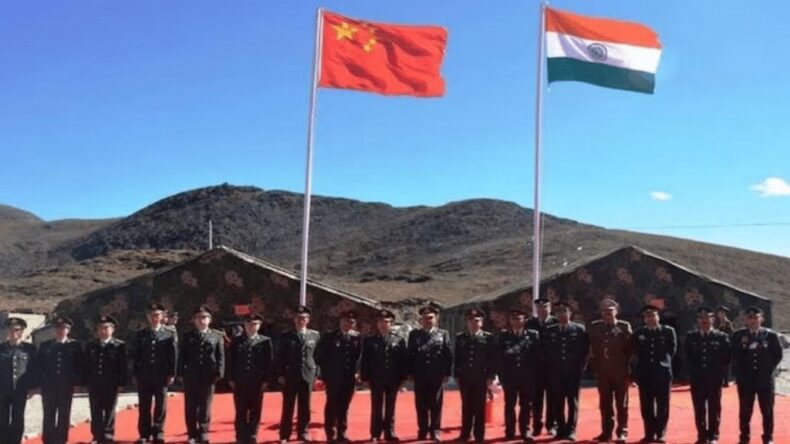
Image source: India posts english
Days before the Defense Minister’s meeting of Shanghai Cooperation Organization (SCO), the Indian and Chinese Military counterparts have engaged in 18th round of Corps Commander Level talks to resolve the boundary dispute which took a sharp rise 3 years ago in the Galwan valley region.
The Indian side was led by Lt. Gen. Rashim Bali of 14 Corps based in Leh which took care of the security of the Ladakh region. The Chinese side was led by an officer of similar rank.
The meeting which took place in the Chushul-Moldo region located in the Chinese side of LAC aimed to resolve the border dispute through ‘ disengagement and de-escalation’ between the various friction points agreed by the Indian and Chinese after the military stand-off that took place in May 2020.
The efforts of the Indian side for disengagement from the friction points of Depsang and Demchok have gained little traction.

Image source: Drishti IAS
The Chinese side which keeps delaying the disengagement has termed the Depsang and Demchok situation as ‘legacy issues’ which need not be solved through the Corps Commander Channel.
These talks come after a period of five months when the last 17th corps commander level talks were held in December last year which achieved little progress in the situation.
A major breakthrough in the situation was achieved last year in the 16th talks when the aggressive Chinese side agreed to de-escalate from Patrolling Point 15, gogra hot springs among others.
These talks were started in 2020 to solve the border dispute through peace and dialogue by both sides after the 2020 military standoff initiated by the Chinese led to the martyrdom of 20 brave Indian soldiers in the Galwan valley region.
Shortly, the Chinese defense minister Li Shangfu is all set to visit the National Capital for the Defense Ministers meeting of SCO, which is chaired by India for the year 2024.
Indo-China Border dispute

Image source: LYFin360
The border dispute between India and china started when in the year 1951 the Chinese side conquered all the region of Tibet which included many parts of India from Arunachal Pradesh and Ladakh.
This issue gained weight in late 1950s and eventually led to a war between both the sides in 1962, which unfortunately India lost.
Later in the 1967 military stand-off the Indian side defeated the Chinese side and killed their 400 soldiers.
Since then both the sides have been building border infrastructure in their respective captured areas and diplomatic issues have persisted since then.
The LAC which is a temporary border between India and China is not given acceptance by the Chinese sides by providing some vague and internationally not accepted reasons.
A set of three agreements have been signed between the two sides to maintain peace in the border areas and avoid any use of weapons by the nuclear powered nations. These include ‘Agreement on peace and tranquility; of 1993; ‘Agreement Between the Government of the Republic of India and the Government of the People’s Republic of China on Confidence-Building Measures in the Military Field Along the Line of Actual Control in the India-China Border Areas’ of 1996 and Agreement on the Political Parameters and Guiding Principles for the Settlement of the India-China Boundary Question, 2005
As per security policy experts the issue is expected to persist for a longer period of time until the political will of China wishes to solve it.
Apart with India the Chinese side has border disputes with almost all the neighboring countries and all the countries in the 9 dash line.
While India holds presidency of Both G20 and SCO the Chinese dictator Xi Jinping is expected to be present atleast once in India













